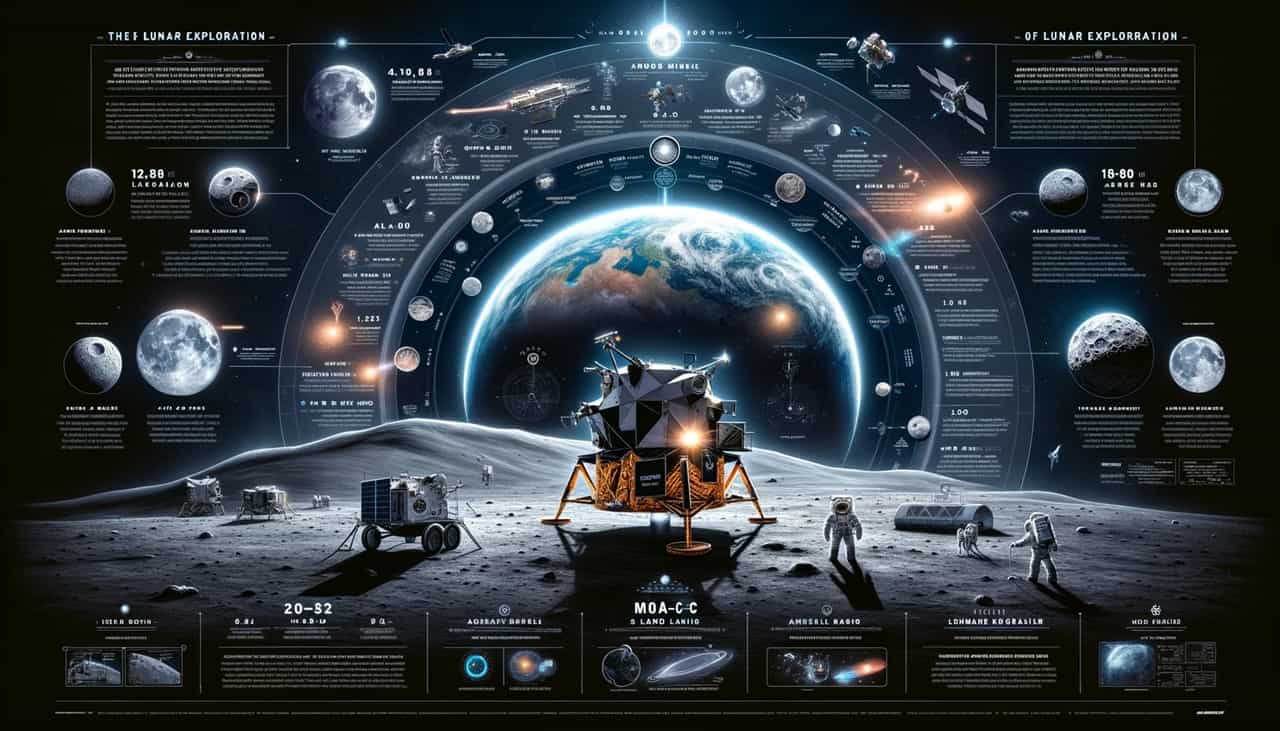Historic Lunar Landing, American spacecraft, lunar landing, moon surface, NASA, Intuitive Machines, commercial space industry, space exploration, Artemis program, lunar south pole, space technology, Nova-C lander, Commercial Lunar Payload Services program, CLPS, lunar missions, space race, lunar exploration, SpaceX, lunar payload, space innovation, astronaut missions, lunar resources, space travel, moon history, space missions
“Experience the historic lunar landing by an American spacecraft since the Apollo missions, marking a new era in space exploration. Discover how Intuitive Machines and NASA’s Artemis program are paving the way for future lunar missions. Explore the advancements in commercial space industry and the strategic importance of the moon’s resources.”

Historic Lunar Landing – A Monumental Achievement for American Spacecraft
For the first time in over five decades since the Apollo missions concluded in 1972, an American-made spacecraft has successfully touched down on the moon. This landmark event marks a pivotal step in NASA’s ambition to send astronauts back to the moon, showcasing the advancements in space technology and exploration strategies.
The Tense Moments Before Triumph
The spacecraft’s journey to the lunar surface was fraught with suspense, particularly during the final moments of its descent. Operated by Houston-based Intuitive Machines, there were initial uncertainties about the spacecraft’s condition upon landing. However, following a nail-biting wait, officials confirmed the successful landing and stable communication with Earth. This success is a testament to the resilience and innovation of the commercial space industry.
Groundbreaking Achievement for Commercial Space Industry
Intuitive Machines’ Nova-C lander’s successful lunar landing is a historic first for a commercial spacecraft. This accomplishment not only validates NASA’s $2.9 billion initiative to engage private-sector spacecraft for lunar exploration but also sets a precedent for future missions. The mission carried six scientific instruments to the moon, laying groundwork for the forthcoming Artemis program aimed at returning astronauts to the lunar surface.
Overcoming Technical Challenges
The mission faced technical hurdles, particularly with the malfunctioning of lasers meant to guide the landing. A critical software update enabled the use of a NASA Doppler Lidar system, ensuring a safe touchdown. This adaptability highlights the mission’s innovative approach to overcoming unexpected challenges.
NASA’s Commercial Lunar Payload Services Program
The mission was part of NASA’s Commercial Lunar Payload Services (CLPS) program, a strategy to leverage commercial capabilities for lunar exploration. By contracting private companies like Intuitive Machines, NASA aims to increase the frequency of lunar missions while reducing costs, a move that signifies a significant shift in space exploration methodologies.
International Race to the Moon
The successful landing gains significance against the backdrop of a renewed global interest in the moon. With several nations, including China and Japan, making strides in lunar exploration, the mission reinforces the strategic importance of the moon, especially the lunar south pole with its potential water ice resources.
Future of Lunar Exploration
Under the Artemis program, NASA plans to establish a sustainable presence on the moon, with missions slated for the coming years despite technical and logistical delays. The program’s success is crucial not only for exploration but also for the strategic interests of the United States in maintaining a leadership role in space.
Conclusion
This groundbreaking mission heralds a new era in lunar exploration, characterized by collaboration between government agencies and the private sector. As we stand on the brink of returning humans to the moon, the achievements of missions like Intuitive Machines’ Nova-C lander serve as a beacon of human ingenuity and the unyielding quest to explore the cosmos.
